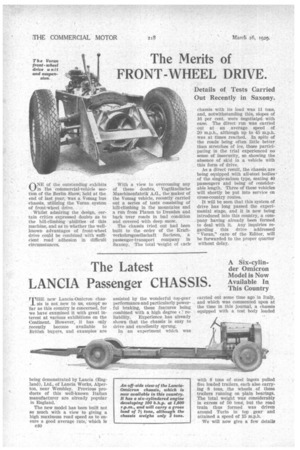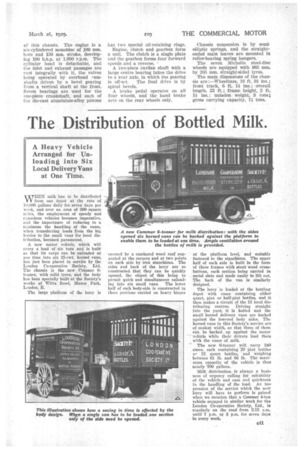The Latest LANCIA Passenger CHASSIS.
Page 70

Page 71

If you've noticed an error in this article please click here to report it so we can fix it.
TE new Lancia-Omicron chassis is not new to us, except so far as this country is concerned, for we have examined it with great interest at various exhibitions on the Continent. However, it has only recently become available to British buyers, and examples are
being demonstrated by Lancia (England), Ltd. of Lancia Works, Alperton, near Wembley. Previous products of this well-known Italian manufacturer are already popular in England.
The new model has been built not so much with a view to giving a high maximum road speed as to ensure a good average rate, which is 040
assisted by the wonderful top-gear performance and particularly powerful braking, these features being combined with a high degree (2 re liability. Experience has already shown that the chassis is easy to drive and excellently sprung.
In an experiment which was
carried out some time ago inItaly, and which was commented upon at the time in this journal, a chassis equipped with a test body loaded with 8 tons of steel ingots pulled five loaded trailers, each also carrying 8 tons, the wheels of these trailers running on plain bearings. The total weight was considerably in excess of 50 tons, but the road train thus formed was driven around Turin in top gear and attained a speed of 15 m.p.h.
We will now give a few details
or this chassis. The engine is a six-cylindered monobloc of 100 mm. bore and 150 mm. stroke, developing 100 b.h.p. at 1,600 r.p.m. The cylinder head is detachable, and the inlet and exhaust passages are cast integrally. with it, the valves being operated by overhead (lamshafts driven by a bevel gearing from a vertical shaft at the front. Seven bearings are used for the one-piece crankshaft, and each of the die-cast aluminium-alloy pistons
has two special oil-retaining rings.
Engine, clutch and gearbox form a unit. The clutch is a single plate and the gearbox forms four forward speeds and a reverse. - A two-piece cardan shaft with a large centre bearing takes the drive to a rear axle, in which the gearing is off-set. The final drive is by spiral bevels.
A brake pedal operates on all four wheel, and the hand brake acts on the rear wheels only. Chassis suspension is by semi. elliptic springs, and the straightended main leaves are mounted in roller-bearing spring hangers.
The seven Michelin steel-disc wheels are equipped with 985 mm. by 205 mm. straight-sided tyres.
The main dimensions of the chassis are :—Wheelbase, 16 ft. 91 ins.; front track, 6 ft. 11 ins.; overall length, 23 ft.; frame height, 2 ft. 11 ins.; unladen. weight, 3 tons; gross carrying capacity, M. tons.




























































































































